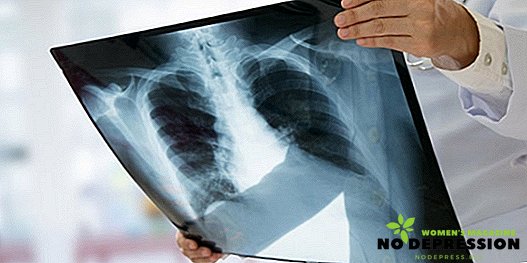A detailed examination of the blood test can see the content of its components such as neutrophils. They help the body fight various infections, viruses, bacteria, fungi.

What are neutrophils, what are they
In the red bone marrow, the formation of neutrophilic leukocytes, the four initial stages of development and their further movement throughout the body. You can see these cells by making a detailed blood test, which contains only one percent of the total number of neutrophils, the rest of them is in the internal organs.
Neutrophils are white blood cells that are a type of white blood cell. Their main task is to perform the process of phagocytosis in the body. At the same time neutrophils, having absorbed the bacteria, die. Cells of this type of leukocytes are divided into two subtypes:
- Segmental view, having a clear structure and a formed core;
- A band-shaped species that does not have a fully formed nucleus, is considered immature.
Band nuclear neutrophils, ripening, become segmented by division of the nucleus into segments. However, only after the process of ripening they perform phagocytosis - the devouring of infected cells.
Immunity depends on the normal amount of neutrophilic leukocytes in the blood. The course of all inflammatory reactions in the body depends on these indicators. Increasing or decreasing these blood cells in a blood test helps to establish the cause of the disease, the stage of disease development.
What is the norm in an adult
In the blood of an adult healthy person, granulocytes (neutrophils) are assumed to be normal in the following percentage - segment cells must be between 42-72%, and immature stab cells must be no more than 5%.
In the case of a decrease in the number of neutrophilic leukocytes, the stage of development of the disease is determined by neutropenia:
- light form - 1 µl contains more than one thousand cells, but less than one and a half thousand;
- middle form - in 1 μl are from 500 to 1000 cells;
- the severe form is less than five hundred units of white blood cells in 1 μl.

Low levels of neutrophils in the blood are accompanied by changes in the human condition - body temperature rises, weakness, chills, increased sweating, headache, problems with the teeth in the oral cavity appear.
Other symptoms may indicate a progressive development of the disease; therefore, urgent hospitalization, blood tests and the correct determination of the disease are necessary.
The increase in immature neutrophils may indicate an attack by the virus, the presence of infectious bacteria in the body, the course of the inflammatory process.
The danger of lowering the level of neutrophils in the blood
 Various changes in the composition of leukocyte cells in the human body indicate the occurrence of inflammatory reactions caused by infections, viruses, bacteria.
Various changes in the composition of leukocyte cells in the human body indicate the occurrence of inflammatory reactions caused by infections, viruses, bacteria.
Having done a detailed blood test, you can see a decrease and increase in the level of both mature neutrophils and immature forms.
Neutropenia, or a decrease in the number of these blood cells, suggests the following causes of the appearance and development of pathological processes in the body such as:
- long-term course of serious diseases caused by bacteria (tularemia, typhoid, brucellosis);
- virus infection (hepatitis, measles, rubella);
- blood formation disorders (leukemia, aplastic anemia, vitamin B deficiency12, AT9);
- bone marrow depletion caused by poisoning with metal salts, alcohol, radiation, chemotherapy, radiation therapy, interferon, painkillers and immunosuppressants.
During a year, neutrophils can decrease by a factor of about 3-5 times without deteriorating human health. This process is also accompanied by an increase in the number of eosinophils, monocytes and is called cyclic neutropenia.
Neutrophils Degraded in an Adult: Causes
 Any change in the number of mature and immature neutrophils in the body will help identify a detailed blood test, prescribed by a doctor and examined in the laboratory. For a laboratory technician, the indicators of lymphocytes, monocytes, segmented and stab neutrophils are extremely important and interesting.
Any change in the number of mature and immature neutrophils in the body will help identify a detailed blood test, prescribed by a doctor and examined in the laboratory. For a laboratory technician, the indicators of lymphocytes, monocytes, segmented and stab neutrophils are extremely important and interesting.
By reducing the mature forms of leukocytes, the doctor diagnoses the presence of a viral disease, infection of the body with infections or inflammation of individual organs, comparing also the quantitative indicators of red blood cells.
In the case of a critical decrease in the mature neutrophilic species, there appears a suspicion of such dangerous diseases as:
- bone marrow metastases;
- stomach ulcer, duodenal ulcer;
- leukemia;
- thrombocytopenia;
- poisoning;
- complications after radiation therapy.
If there are concerns about the development of these diseases, there should be an objective need for further examinations and prescribing medications to stop and eliminate the causes of infectious or viral infection.
Decrease in segmented cells can also be caused by prolonged use of drugs such as penicillin and analgin.
It is only the doctor who can competently and correctly determine the cause of the decrease in any types of neutrophils. He will prescribe an additional examination, establish the process of the necessary treatment of the disease.
If neutrophils are lowered and lymphocytes are elevated in an adult
The content of all leukocytes in the body must be in the permissible rate. With an increase in the number of lymphocytes (type of leukocyte cells), we can talk about the threat of infection:
- various viruses:
- tuberculosis;
- the course of acute and chronic lymphocytic leukemia;
- hyperthyroidism (increased hormone levels);
- lymphosarcoma (the appearance of a malignant tumor).

Neutropenia
Only by examining the leukocyte form in detail, one can see a significant decrease in neutrophils and a simultaneous increase in lymphocytes, because the total number of all leukocytes in the overall analysis does not change.
In this case, it is safe to talk about the presence of a viral infection in the body, the presence of a malignant tumor, and a blood test will help determine the negative effects on the internal organs of any radiation or simply incorrect intake of certain drugs.
In some cases, after treatment for influenza, acute respiratory viral infections, colds, when blood counts are just beginning to return to normal, you can see a decrease in neutrophilic granulocytes with elevated lymphocytes, which gradually return to normal. That is, neutropenia on the background of lymphocytosis indicates that the infection is neutralized in the body and undergoes a healing process.
Lowering of neutrophils in children: causes
Any change in the normal level of blood cells in a child’s blood indicates a change in immune protection. Low neutrophilic leukocyte count indicates the presence of neutropenia.
The indicators of these leukocyte cells can be determined by donating a blood test for a detailed study of the composition of all types of neutrophils under laboratory conditions.
The normal content of white immune cells in the child’s body can be seen in the table.
| Child's age | Mature neutrophils (segmented) | Immature (band) | |
| ×109 | % | % | |
| from birth to one month | 1,5-8 | 45-80 | 3-20 |
| from one month to a year | 1,8-8,5 | 15-45 | 0,5-4 |
| from one to thirteen | 2-6 | 35-62 | 0,7-5 |
In children whose age is more than thirteen years, the quantitative content of neutrophils in the blood is close to normal indicators of this level of adult cells.
There are a number of reasons leading to a decrease in blood cell counts of a given species. This can be expressed both as a percentage and in quantitative indicators of mature and immature forms of neutrophils. A significant change may indicate the following diseases:
- viral diseases (influenza, ARVI, measles, hepatitis, rubella);
- chemical poisoning;
- fungal infections;
- chemotherapy irradiation;
- acute leukemia;
- anemia (iron deficiency, aplastic, hypoplastic and megaloblastic origin);
- condition after anaphylactic shock;
- thyrotoxicosis.
Also, the use of such drugs as painkillers, glucocorticosteroids, anticonvulsants, can lead to a noticeable decrease in neutrophilic leukocytes. At an early age, the reduction of neutrophils is a normal process - their number should increase with the maturation of the body, therefore, observing the normal state of health in children, you should not worry too much about this.
And in conclusion - a curious video about neutrophils.












